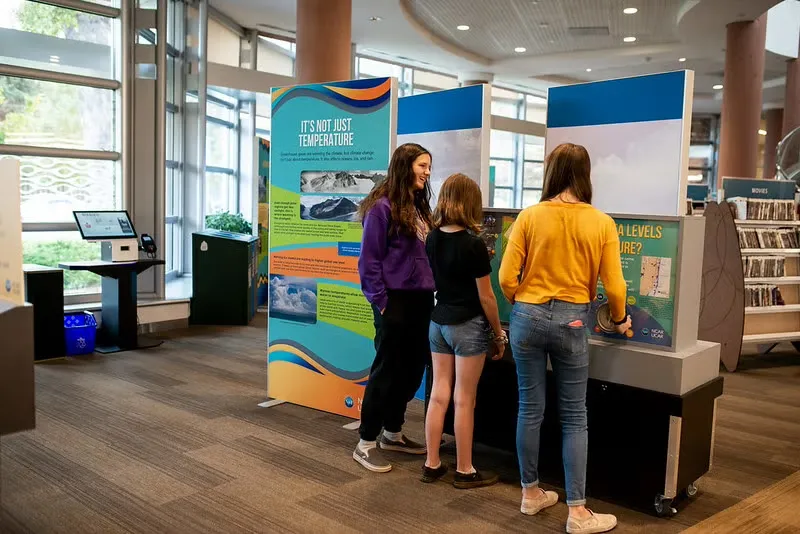Exhibit Interactives

The Science
The exhibit includes two hands-on activities — one about sea level rise, and another about lowering your carbon footprint. Below you will find more information about the science data behind both of these exhibit interactives.

How Much Will Sea Levels Rise in the Future?
Because of ice melt, as well as thermal expansion (where warmer water expands and takes up more space), sea level is rising. In fact, sea levels are expected to rise between two and seven feet by the end of this century. How much sea levels rise in a specific coastal region depends on many local factors, such as topography and regional geology.
This sea level rise activity uses data from Surging Seas, a project of Climate Central. To predict sea level rise in coastal Louisiana, Florida, Virginia, and New York City, we used data from the RCP 2.6 scenario for the low carbon emissions scenario, and from RCP 8.5 for the high carbon emissions scenario. Below are references for these data sources:
- Global sea level rise model: Sea Level Change, in IPCC AR5 Climate Change 2013: The Physical Science Basis
- Methods to localize sea level rise projections: Tebaldi C, Strauss BH & Zervas CE (2012). Modeling sea level rise impacts on storm surges along US coasts. Environmental Research Letters, 7(1), 014032.
- Local water level station data: NOAA Hourly data from 1923 to 2015
Lower Your Carbon Footprint
Many human activities release greenhouse gases, like carbon dioxide (CO2), into our atmosphere. You can directly participate in these activities, like driving your car. You can also indirectly contribute by engaging in activities where these gases were released before the product reached you, like purchasing food shipped to your local grocery store from far away. The amount of carbon dioxide and other greenhouse gases directly and indirectly emitted into our atmosphere by you is called your carbon footprint.
Fortunately, there are choices we can make that will help reduce our impact. We only selected a handful of choices for our carbon footprint activity, but there are many more choices for you to consider! Here, you’ll also find the data we used to estimate how much CO2 would be saved from going into the atmosphere by making certain choices.
-
Use the Cool Climate Calculator, carbon footprint estimator, to figure out how much greenhouse gas you are emitting and how to cut down.
Carbon footprint data sources:
-
2018 Traffic Data for U.S. Airlines and Foreign Airlines U.S. Flights
-
Assessing the evolution of power sector carbon intensity in the United States
-
How Energy-Efficient Light Bulbs Compare with Traditional Incandescents
-
Organisation for Economic Co-operation and Development (OECD Data Explorer)
-
Public Transportation’s Role in Responding to Climate Change
